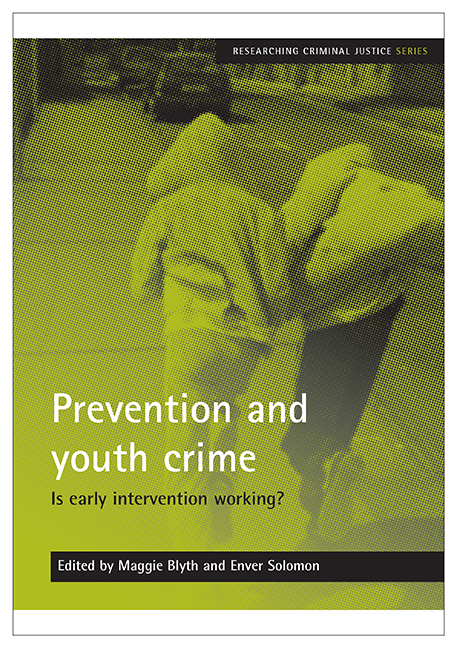Book contents
- Frontmatter
- Contents
- Foreword
- Acknowledgements
- List of abbreviations
- Notes on contributors
- Introduction
- 1 Integrated or targeted youth support services: an essay on ‘prevention’
- 2 Intervening in gang-affected neighbourhoods
- 3 Family intervention projects and the efficacy of parenting interventions
- 4 Early intervention and prevention: lessons from the Sure Start programme
- 5 Attachment research and the origins of violence: a story of damaged brains and damaged minds
- 6 Early intervention in the youth justice sphere: a knowledge-based critique
- 7 European perspectives on prevention
- Conclusion
5 - Attachment research and the origins of violence: a story of damaged brains and damaged minds
Published online by Cambridge University Press: 25 March 2023
- Frontmatter
- Contents
- Foreword
- Acknowledgements
- List of abbreviations
- Notes on contributors
- Introduction
- 1 Integrated or targeted youth support services: an essay on ‘prevention’
- 2 Intervening in gang-affected neighbourhoods
- 3 Family intervention projects and the efficacy of parenting interventions
- 4 Early intervention and prevention: lessons from the Sure Start programme
- 5 Attachment research and the origins of violence: a story of damaged brains and damaged minds
- 6 Early intervention in the youth justice sphere: a knowledge-based critique
- 7 European perspectives on prevention
- Conclusion
Summary
‘The relevance lies not in the weapon they carry; it is in the mind that holds the weapon.’ (anonymous)
There is little doubt that we belong to a species that has made the most amazing technological advances over the last few centuries: we can fly to the moon, we can communicate instantly across the globe, we can map our genome, and advances in medicine and sanitation mean that many of us live longer and healthier lives than our ancestors. And yet, despite such extraordinary skills and scientific advances, when it comes to understanding human behaviour, and especially violent behaviour, we seem to be groping in the dark.
The UK government is currently faced with a spate of knife violence and killings in London and other cities, which are being highly publicised by the media. We are told that knife crime has existed for hundreds of years, but that it has now reached a critical mass and, as a result of the media coverage, it is in our face on a daily basis and, more important, in the face of the young people who feel threatened by it. The government wants to be seen to be doing something to make us feel safer and has produced a £100 million Youth crime action plan (YCAP) (HM Government, 2008). But, even before the plan was published, researchers in the field of child violence were providing evidence that contradicted the core assumptions of government policy.
What is perhaps most extraordinary to someone like myself, brought up among the so-called primitive tribes of Dayaks and hunter gatherers of Borneo, is that, in this so-called civilised culture, we can countenance the sight of a 10-year-old coldly stabbing another child without realising that this is totally abnormal behaviour. How can it be that children in our communities live in such terror that they feel they have to carry a knife to protect themselves? They tell us that their fear is such that the furthest thing on their minds is being stopped by the police. How can a young man kill another simply because he feels ‘disrespected’? Why aren't we asking ourselves the obvious questions: What is wrong with these kids? What is going on in their minds? As one wise young person is quoted as saying: ‘The relevance lies not in the weapon they carry; it is in the mind that holds the weapon’.
- Type
- Chapter
- Information
- Prevention and Youth CrimeIs Early Intervention Working?, pp. 69 - 88Publisher: Bristol University PressPrint publication year: 2008



